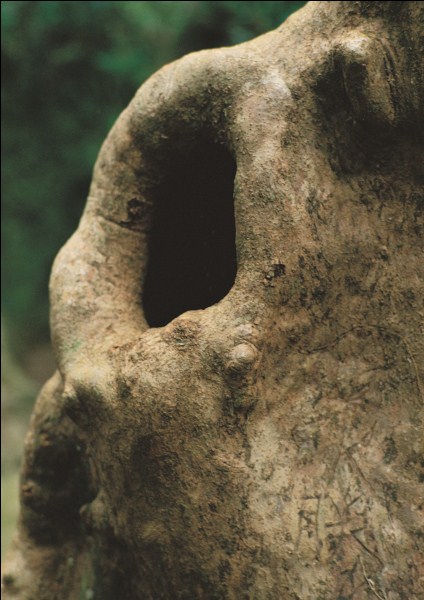Hi Everyone,
This week’s newsletter has a new dimension added to it that I am hoping to make a regular feature, which is regular short meditation recordings that I will be creating and posting on my meditation blog for people to listen to and download. This week’s guided meditation is a nine minute insight meditation practice focusing around caring for the physical body. Click on the link to have a listen:
Poem of Care for the Physical Body Meditation Free Recording
This week’s article below discusses insight meditation using the “Poem of Care” as a practical example. After reading the article I hope you’ll feel enthused about just how simple and effective mindfulness and insight meditation can be, and feel like you really have an understanding of how it works!
Enjoy the Meditation Recording, and have a great week!
Yours in the spirit of insight,
Toby
*******
 Insight Meditation – Improving your subjective experience by developing your Objective Perspective
Insight Meditation – Improving your subjective experience by developing your Objective Perspective
Often when people talk about being objective in their life it seems like in order to become so they need to cut themselves of from their subjective or feeling experience of the situation. Conversely in order to really enter into a situation fully often what seems to happen is that we abandon our objectivity and plunge deeply into a feeling-based experience of the situation.
Pushed to an extreme, we can find ourselves caught between these two polarities:
- Being objective = being cold and uncaring
- Being subjective = being totally bound up in our feelings and lacking in perspective
Of course what we really need for an enjoyable and balanced life is to be able to bring both our objective and subjective perspectives together in a balanced holism, and this is one of the main benefits that insight meditation can give to us.
How does this work?
The basic dynamic of insight and/or mindfulness meditation (I am using the two terms here synonymously) is this; we begin by deliberately taking an objective perspective on our object of meditation in order to bring fuller conscious awareness of it. After having observed our object of meditation objectively for a while, we then consciously extend a positive subjective feeling or emotion to the object that we have been observing objectively.
Improving your objectivity improves your subjectivity
So, the essential idea with insight meditation is that by initially taking a step back and observing your world objectively, you can then consciously project/extend positive and beneficial subjective feelings into that world that will increase your ability to participate enjoyably and benevolently in that world.
A concrete example please?
Ok, so let’s take a concrete example that I hope will make this clear and easy to understand.
Below you can see a meditation entitled “Poem of care for the Physical Body”, which I composed a few years back. In this meditation the observed object is the physical body. Each “verse” has two lines, and the way it works is very simple; as you inhale you practice taking an objective perspective on your body, and then as you exhale you extend a subjective feeling to the body.
To take the first two lines as an example:
“Breathing in I am aware of my physical body,
Breathing out I extend care and calm to my physical body”
Here, as we breathe in we deliberately step back and cultivate objective awareness of our body. Then as we exhale we consciously extend the positive, subjective feelings of care and calm to our body.
In the second two lines this continues:
“Breathing in I am thankful to my physical body,
Breathing out I extend my love and gratitude to my physical body”
As be breathe in, we objectively recognize that there are many ways in which our body is serving us well in every minute of every day. With this recognition we then breathe out and extend the subjective feeling of love and gratitude to our body.
From this example you can see that insight meditation works to improve our subjective experience (in this case of our body) by working to improve our objective experience first, and then bringing that objective perspective together with our subjective feelings in benevolent partnership, as opposed to the dissonant conflict that so often exists in us between these two poles of our being!
Here is the full “poem”, please note that you can listen to and or download a short (9min) recording of this meditation on my meditation blog that I have done here:
Poem of Care for the Physical Body Recording
Poem of Care for the Physical Body
1. Breathing in I am aware of my physical body,
Breathing out I extend care and calm to my physical body,
2. Breathing in I am thankful to my physical body,
Breathing out I extend my love and gratitude to my physical body,
3. Breathing in I am aware of psychological tensions I hold within my physical body,
Breathing out I release this tension,
4. Breathing in I feel at home in my physical body,
Breathing out I rest within that homely space.
Final thoughts
Sometimes the conflict between our subjective experience and objective perspective has a complex history that needs a skilled third party perspective to untie the complexity and re-fashion that relationship in a new way. This is one of the main functions of the 1:1 coaching that I offer as a service. However, the regular practice of simple insight meditation forms such as I have explained above can really go a long way to improving the dynamic between our objective experiences and subjective feelings. The Poem of Care for the Physical Body is a short, simple and profound way of beginning the journey of insight-through-meditation.
 The nature purpose of training in concentration
The nature purpose of training in concentration Isn’t it About Time You Got Your Inner Self in Shape? (Integral Inner Fitness Training)
Isn’t it About Time You Got Your Inner Self in Shape? (Integral Inner Fitness Training) Avoiding the Lose-Lose Perspective Trap
Avoiding the Lose-Lose Perspective Trap



 Article of the Week:
Article of the Week: Article of the Week:
Article of the Week: